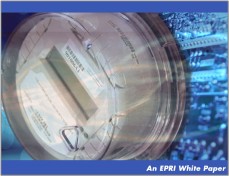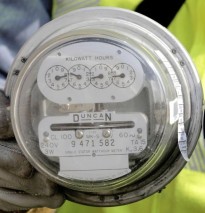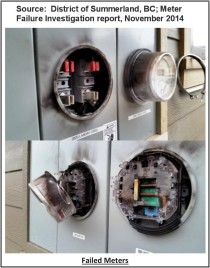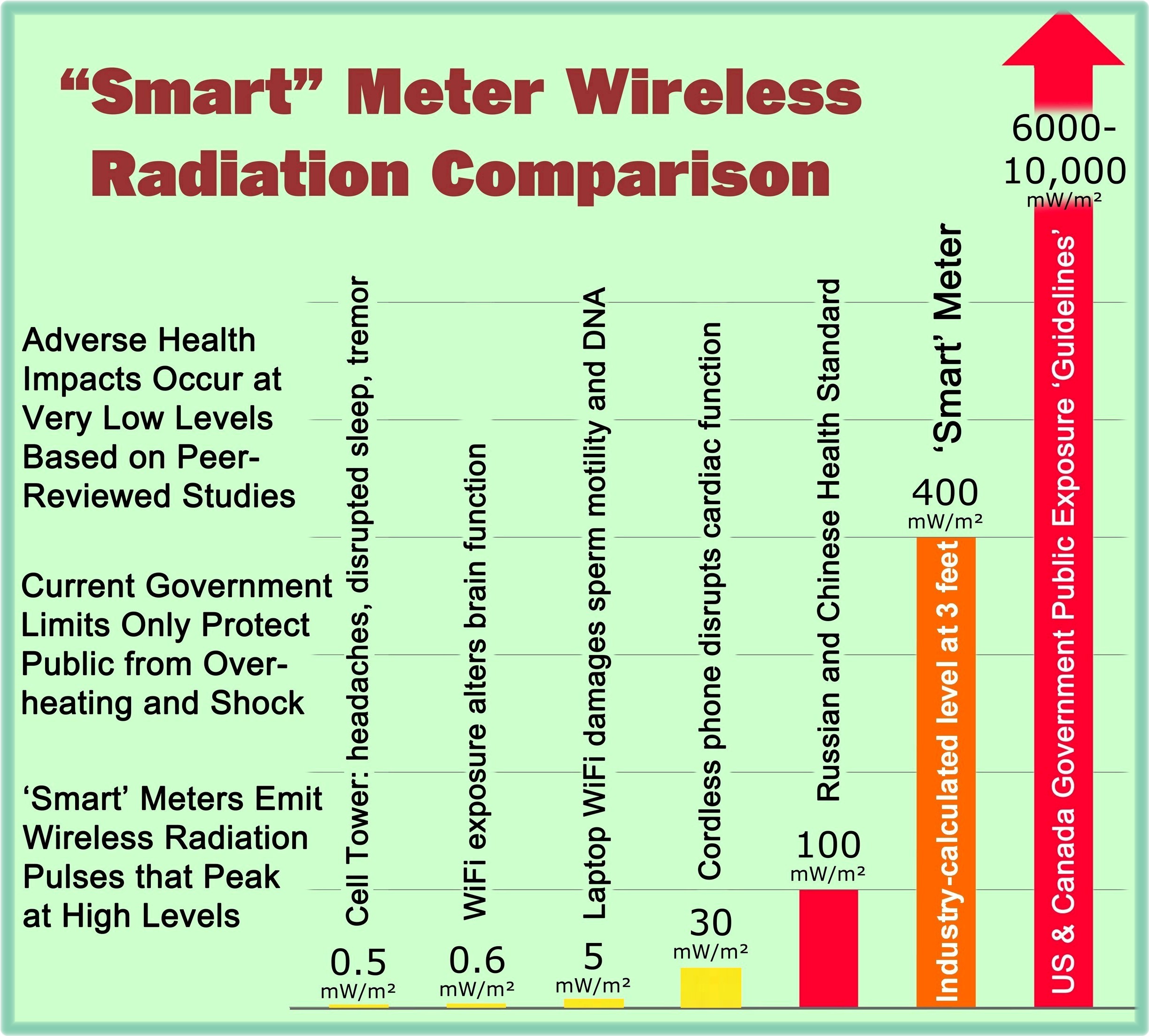by K.T. Weaver, SkyVision Solutions
 In reviewing an electric utility industry document from 2010, it is quite clear that the industry knew of safety and accuracy issues with smart meters before they were ever manufactured and deployed. The title of the document is “Accuracy of Digital Electricity Meters,” published by the Electric Power Research Institute (EPRI).
In reviewing an electric utility industry document from 2010, it is quite clear that the industry knew of safety and accuracy issues with smart meters before they were ever manufactured and deployed. The title of the document is “Accuracy of Digital Electricity Meters,” published by the Electric Power Research Institute (EPRI).
What is so incredible about the document is how strongly it was acknowledged that traditional analog meters were “an amazing of piece of engineering work.”
Quoting the EPRI document:
“By anyone’s assessment, traditional electromechanical meters are an amazing piece of engineering work. Refined over a hundred years, the design of a standard residential electricity meter became an impressive combination of economy, accuracy, durability, and simplicity.”
“Most don’t likely recall their electricity meter ever failing. Such is the reliable legacy of the electromechanical meter.”
 On the subject of accuracy for analog meters: “Although simple and mechanical, the result was like a vault, locking-in and protecting the reading of cumulative consumption and immune to sudden shift or loss of data.”
On the subject of accuracy for analog meters: “Although simple and mechanical, the result was like a vault, locking-in and protecting the reading of cumulative consumption and immune to sudden shift or loss of data.”
On the subjects of both safety and accuracy: Electromechanical meters are “generally immune to standard surge events.”
Why Change from Analog Meters to Digital Meters?
With traditional meters being so impressive, safe, and reliable, why would anyone change to something else? Were digital meters somehow superior in any technological manner? No, they were not. It is a shame we could not have stuck with the old adage that, “if it ain’t broke, don’t fix it.”
As indicated in the EPRI document, the change was driven by a desire for additional “functionality.” The utilities wanted a more economical means to charge consumers with “time of use and real time prices”:
“Manufacturers who designed the first solid state residential meters understood the challenge they faced. The electromechanical devices they intended to replace held the trust of both utilities and the general public.”
“Electromechanical meters are dependable products that have served society well. Over a hundred years, their design was optimized so that they provided an excellent combination of simplicity and reliability while providing a single measurement – cumulative energy consumption. Unfortunately, these products did not support the additional functionality needed to integrate customers with a smart grid, such as time of use and real time prices, a range of measured quantities, communication capability, and others.”
“New meters may enable new rate structures such as time-of-use or critical peak pricing.”
“The impetus that finally drove the transition to solid state metering was not cost reduction, nor improvements in service life or reliability, but the need for more advanced functionality. Electromechanical meters, with that familiar spinning disk, did a fine job of measuring total energy consumption, but became extremely complex if required to do anything more. Versions that captured peak demand and versions that measured consumption in multiple time-of-use (TOU) registers have existed, but were not economical for residential purposes.”
Digital Utility Meters Have “Voltage Transient Susceptibility”
Although the EPRI document was ostensibly written about meter “accuracy,” it reveals a fundamental safety weakness with regard to all digital meters (as compared with analog meters) in a section entitled, “Voltage Transient Susceptibility.” Quoting the document:
“The electronic circuits of solid state meters connect to the AC line to draw operating power and to perform voltage measurement. … A range of electronic clamping and filtering components are used to protect the electronics from these voltage surges, but these components have limitations. The ANSI C12.1 metering standard specifies the magnitude and number of surges that meters must tolerate. … In any case, surges that exceed the tested limits, either in quantity or magnitude, could cause meter damage or failure.”
“Electromechanical meters had no digital circuitry. They utilized spark-gaps to control the location of arc-over and to dissipate the energy of typical voltage events. As a result, they were generally immune to standard surge events. This nature is evidenced in the section of ANSI C12.1 that specifies voltage surge testing, but allows that ‘This test may be omitted for electromechanical meters and registers’.”
 Based upon the above information, it should not be surprising to see reports in the news of “exploding smart meters” following power surges. For example, in November of 2014, there were 69 Digital Meters Damaged in the Summerland Surge in British Columbia, Canada. As stated in the hyperlinked article, 69 meters were severely damaged as a result of a power surge even though the immediate cause of the power surge was not evident at the time of the reported news story. A subsequent investigation concluded with a hypothesis that utility meter failures resulted from an accidental transfer of voltage potential from a FortisBC owned transmission line to a District owned circuit.
Based upon the above information, it should not be surprising to see reports in the news of “exploding smart meters” following power surges. For example, in November of 2014, there were 69 Digital Meters Damaged in the Summerland Surge in British Columbia, Canada. As stated in the hyperlinked article, 69 meters were severely damaged as a result of a power surge even though the immediate cause of the power surge was not evident at the time of the reported news story. A subsequent investigation concluded with a hypothesis that utility meter failures resulted from an accidental transfer of voltage potential from a FortisBC owned transmission line to a District owned circuit.
To more fully explain the safety issue, as indicated by EPRI, surge events can cause a digital meter failure. When that failure occurs catastrophically, an explosion or fire may (and sometimes does) result. Analog meters are generally immune to such failures. The definition of a catastrophic meter failure is provided in the short video below:
Embedded Software and Sensitive Circuitry Can Result in “Glitches”
The EPRI document also reveals how the utilities and manufacturers knew that “glitches” and “transient glitches” could result from the use of meters using digital circuitry. These glitches would affect the accuracy of meters, and the transient glitches might be quite difficult to troubleshoot, as shown below:
“Solid state electronic meters are designed to provide [the] same register function [as analog meters], but using embedded software and non-volatile memory chips as the storage mechanism.”
“There is the possibility of imperfections in the embedded software or sensitivities in the electronic circuitry. Hypothetically, such imperfections or sensitivities could result in glitches that could affect the meter reading.”
“With electromechanical meters, modes of failure tend to be permanent. Once a meter or its register fails, due to wear, dust, etc, it is generally still found to be in a failed state when tested later. Software flaws, on the other hand, could create a transient glitch, leaving a meter that checks-out perfectly afterwards. This possibility complicates the diagnostic process for solid state meters and may make it difficult to discern the root cause of problems.”
Summary and Analysis
As stated by EPRI, “electromechanical meters are dependable products that have served society well.” The utility industry’s transition to digital meters inherently exposes the consumer to a number of risks. Meter accuracy and safety are two of those risks as delineated in this article. There are many more, including invasion of privacy, health, and cyber security threats to name a few and which have been discussed in other articles at this website.
The EPRI document on accuracy concludes by mentioning:
“there will likely be both real and perceived issues with solid-state designs that need addressing. Care must be taken to consider each case thoroughly and to use sound diagnostic practices to trace each issue to its root cause.”
“Ideally, each investigation should not only resolve any homeowner concerns, but also discover any product imperfections so that solid-state meter designs may be continually improved.”
Editor’s Note: In other words, regarding the above quotes, consumers will be used as guinea pigs for unproven digital meter designs.
The EPRI document’s final sentence states:
“When advanced metering functions are needed, reverting to electromechanical meters is not a viable option.”
So with the acknowledged inherent design issues with digital meters, reverting back to the old reliable analog meter is not considered “a viable option.” This conclusion is basically the result of a straw man argument followed by careless and narrow-minded people wanting to promote the manufacture and sale of smart meters.
The argument for “added functionality” centers around the perceived need by utilities to charge customers time of use and real time prices. This in itself is a debatable topic, but even in the EPRI document it was mentioned that electromechanical meters have been designed with time-of-use (TOU) registers, but they were not considered “economical for residential purposes.”
In addition, as recently stated by the Executive Director for the New York State Smart Grid Consortium, “AMI is not needed to send price signals through the grid.”
Furthermore, we have previously pointed out that the smart meter is a canard and reflects a diversion of resources from where money should actually be spent to build a truly resilient electric grid system.
With the ongoing troubling revelations about digital utility meters, we need to more strongly challenge the straw man argument that there is no viable alternative to the analog meter and that an alternative is even needed. In fact, the analog meter has been shown to be technologically superior in terms of performing the required function of delivering electric service to customers in a safe, reliable, and economical manner. Let’s stick with what we have unless a truly superior meter can be demonstrated to take its place which meets the necessary functionality requirements. Otherwise, our health and safety are unnecessarily put at risk. In addition, billions of dollars will continue to be wasted if smart meter deployments persist.
Primary Source Material for this Article
“Accuracy of Digital Electricity Meters,” Electric Power Research Institute (EPRI) White Paper, May 2010, available through the following link: http://wp.me/a3nav9-33O.
Updated Content, April 2016
Recently, a document was discovered from 2006 confirming that utility experts have known for years that solid-state meters occasionally suffer from “catastrophic failures”:
“[T]hree utilities were quite frank that solid-state meters do fail occasionally while electromechanical meters rarely fail completely. … ‘We lost several nights sleep worrying about catastrophic failures, but it was worth the risk’ according to Pini.”
Based upon the context of the above statements in the document, catastrophic meter failures were “worth the risk” due to the solid-state meters being judged more accurate and being able to save on calibration costs for the utility company.
Reference: “Solid-State Meters at Three Utilities,” UtiliPoint International, March 2006, at http://web.archive.org/web/20160419164411/https://www.itron.com/na/PublishedContent/Solid-State%20Meters%20at%20Three%20Utilities.pdf





I’ve talked to Fortess to have my smart meter removed and they told me it can’t be replaced with the older one. Is this true? What can I do?
If you are referring to Fortis BC, that utility only provides the option to turn-off the AMI radio which helps to resolve health and privacy concerns; see https://www.fortisbc.com/Electricity/CustomerService/ElectricityMeters/Pages/Radio-off-advanced-meters.aspx. Beyond that, I suggest you seek out others in your local area who may be helping to fight “smart” meters.
Got my smart meter October 22, 2017. On that day and the next I had 13.2 kwh used each day. The evening of October 23, 2017 there was a brown out. The next day the kwh spiked to 69.6 kwh. I did not know this until I got the November bill for $612. Average bill had been around $150. Called DTE they sent someone out to check the meter and they said nothing was wrong, it was my house must be having a problem. December bill came along and it was $457. I called DTE almost every day and no one would listen. I talked to an electrician and we did a study and we calculated I should have used .22 kwh on the one day during the one hour, DTE’s app shows how much you use in one hour, and it showed I used 1.072 kwh in that one hour. I only had one thing on that hour. I checked the incoming legs of power with the circuit turned off and the amp meter read 0 amps, just like it should. I talked to maybe two dozen people in DTE and all but one said it was my problem. I convinced that one person to change the meter. It finally got changed on February 8, 2017. Average consumption in the 5 days after it was changed was 10.9 kwh per day. From October 24, 2016 till February 7, 2017 I was averaging 68.9 kwh per day.
I will be expecting a refund from them as I put in a complaint on DTE’s app to the MAE.
After each brown out or power outage, you best be checking your meter. At least my meter didn’t blow up like I have read some have in California.
I have lived in my home since 1993. My electrical usage started off at $80/mth and gradually grew to between $110-$120/month until April 2016. Then I started getting bills of $23/mth that persist to today. I never look at my bill and when I looked at the previous bills there were 3 actual readings including the last one. There has been no record of use since April 2016 and the digital reading doesn’t show any numbers, just fractions of the digital 8. I suspect electrical surges as previous surges have blown a 60 inch tv, 2 other tvs, 3 computers, and the digital display of the stove. When I complained about the surges I was told there was nothing wrong and they would cover my loss. They even put equipment on the line. They said there was nothing wrong.
June July and August bills June 111kwh per day or 21 times last year average. July bill 3600 kWh exactly 120 kWh per day and 21times last years average. ( neighbor turned off main internal CB on July 9th. Aug bill 1080 kWh for 9 days with old meter (exactly 120 kWh per day with old meter when zero energy was used) and zero kWh with replaced meter. (This proves that the line from meter to house is not grounded or shorted.) I believe the CMOS was changed after late May lightning strike (verified by my neighbor Dick) but automatically reset to read accurately after plugged back in. (Same as rebooting a PC). Meter accuracy tested 3 times with no failures Apparently logic doesn count and national standards say I must pay. WHATCAN I DO?? My timeline and 3month bills are available if desired. I am a WW2 combat infrantry veteran 91 tomorrow retired after 37 1/2 years from IBM field engineer on mid size computers. Repeat: What is my next step? St Petersburg FL
You appear to be indicating your summer bill is much higher than expected. However, I don’t understand billing where you say 120 kWh/day when zero energy was used and that a replaced meter showed zero usage. If true, it would seem this would be fairly easy for the utility to determine there is a problem somewhere and help you out.
If that doesn’t work, and you still really think there is a problem, I have seen consumers contact a local TV station (as an example) and have an investigative reporter review your situation and air your concerns to help pressure the utility to help resolve.
Also, in saying that 120 kWh per day is 21 times last year average, you are saying that you normally would average only about 6 kWh per day which is extremely low. Were you living at this location last year and this year, that is, at same occupancy level for both time periods?
Best of luck, happy birthday, and thanks for your service to the country.
Don’t be misled there is a criminal agenda behind these abominations…..
Time of use and real time prices, so they can tie the utilities into real-time international markets, whilst trading slot-derivatives on the commodities exchanges in Chicago…
Also: Who originally set the standards for: [“The ANSI C12.1 metering standard specifies the magnitude and number of surges that meters must tolerate.] ? Analog meters had no surge or over-charge problems…
The legal suit target is: Whom or what agency of record approved of an ANSI C12.1 designation of the untested; yet installed meters? Not just a few, but millions of crap meters. Failure is failure. Arson is arson…
I FOUND a great MICHIGAN PUBLIC SERVICE COMMISSION REGULATION –SECTION 460.62—- MPSC MUST INFORM PUBLIC OF ANY HEALTH AND SAFETY ISSUES, THEY HAVEN’T, MPSC IS GUILTY OF NEGILENCE TO INFORM PUBLIC ABOUT HEALTH AND SAFETY ISSUES ABOUT SMART METERS BEING INSTALLED BY UTILITIES ACROSS MICHIGAN. CIVIL RIGHTS AGREES AND ACCEPTED MY COMPLAINT AGAINST MPSC.